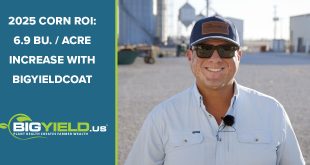Atmospheric carbon levels catch a lot of attention. To find an evener larger carbon store, however, you must look below the soil surface.
Relative to the atmosphere’s level of stored carbon, the soil contains carbon at levels roughly three times higher, according to the CarbonScapes resource . Even after summing carbon stored in plant matter with carbon contained in the atmosphere, the soil still contains carbon at levels about double that total. With carbon levels like these, the soil is considered a significant carbon sink.
Soil carbon assumes several important roles. For one, carbon held in the soil is carbon that’s preserved or sequestered for future use. Also, certain land management practices have the potential to minimize greenhouse gas levels, according to CarbonScapes.
Additionally, soil microbes rely on carbon as a food source. In recent weeks, we’ve stressed the importance of soil microbes in plant health and crop performance. Microbes may offer benefits such as protecting plants from diseases and improving nutrient utilization. To perform their necessary functions, those microbes require adequate nourishment. Carbon fills that need.
Despite the soil serving as a significant carbon sink, a United Nations report from 2012 summarized research suggesting that soil carbon levels had declined. One study quantified that the global carbon supply held in soil and vegetative resources had dropped by about 60 percent since the 19th century. Due to reduced soil carbon levels, poorer productivity has been evident in 25 percent of the world’s land during the past few decades.
Perhaps related to the dive in carbon stores, fewer microorganisms now call the soil home, too. This story from Lancaster Farming shares about land management practices being a contributor to the decline in soil microbe levels. It goes on to explain that a healthy microbial population nourished by carbon represents an important key to on-farm production success.
We at BigYield.us believe in this approach, and our BPIF-Soy in-furrow treatment for soybeans is formulated to both supplement soil microbial levels and supply the right nutrition for those microbes. The BPIF-Soy treatment blends the multiple beneficial bacteria in our BigBioYield biological with our BigSweetYield cold-processed sweetener. The sweetener gives microbes and crops just what they need to thrive. In this video, Kent Kauffman of BigYield.us explains why adding a biological and carbon source at soybean planting is important.
If you have questions about soil carbon levels or adding BPIF-Soy to your soybean planting plan, then contact us anytime.
 BigYield High Yield Soybeans, High Yield Corn, and High Yield Wheat
BigYield High Yield Soybeans, High Yield Corn, and High Yield Wheat



